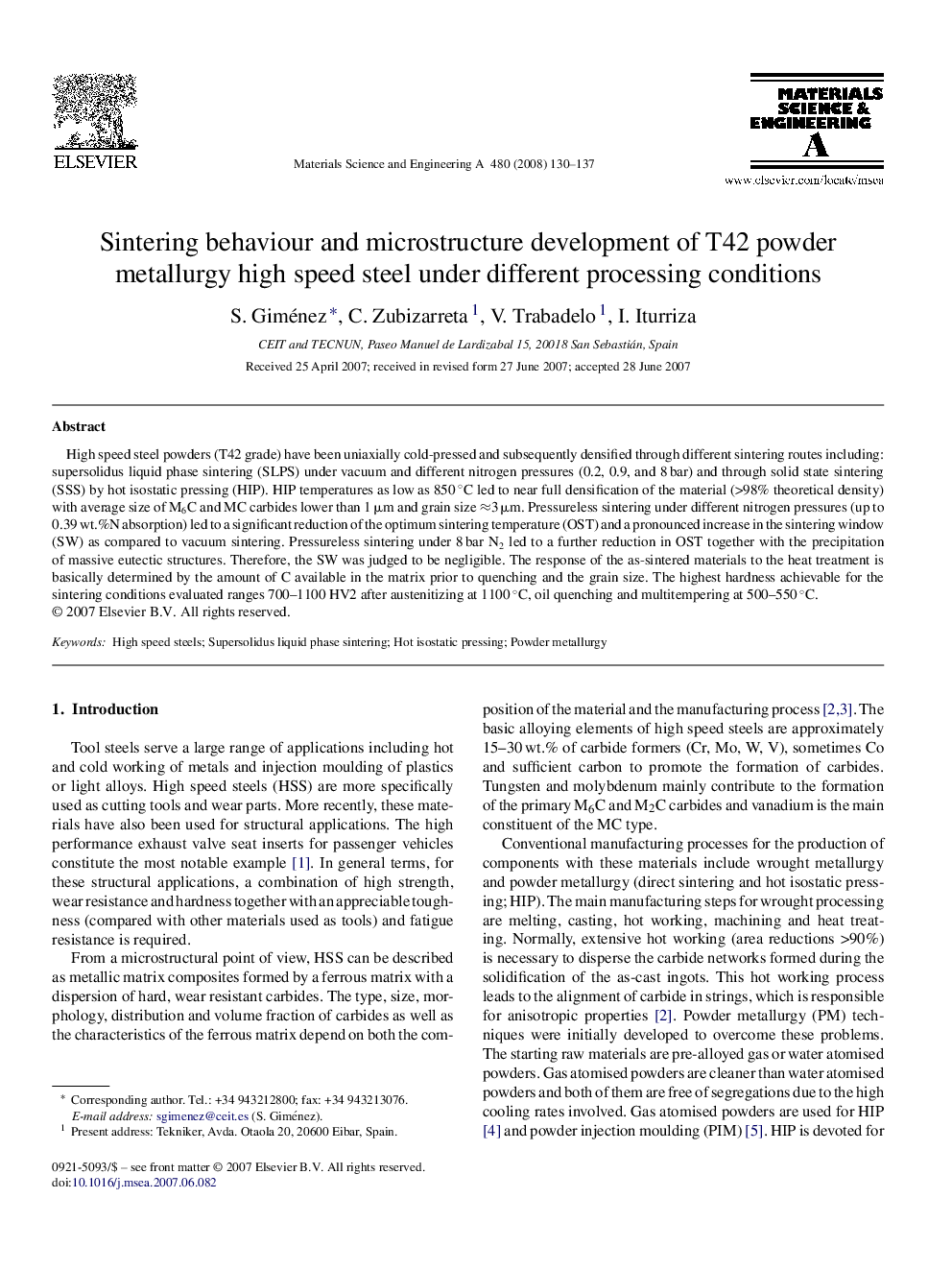| Article ID | Journal | Published Year | Pages | File Type |
|---|---|---|---|---|
| 1582636 | Materials Science and Engineering: A | 2008 | 8 Pages |
High speed steel powders (T42 grade) have been uniaxially cold-pressed and subsequently densified through different sintering routes including: supersolidus liquid phase sintering (SLPS) under vacuum and different nitrogen pressures (0.2, 0.9, and 8 bar) and through solid state sintering (SSS) by hot isostatic pressing (HIP). HIP temperatures as low as 850 °C led to near full densification of the material (>98% theoretical density) with average size of M6C and MC carbides lower than 1 μm and grain size ≈3 μm. Pressureless sintering under different nitrogen pressures (up to 0.39 wt.%N absorption) led to a significant reduction of the optimum sintering temperature (OST) and a pronounced increase in the sintering window (SW) as compared to vacuum sintering. Pressureless sintering under 8 bar N2 led to a further reduction in OST together with the precipitation of massive eutectic structures. Therefore, the SW was judged to be negligible. The response of the as-sintered materials to the heat treatment is basically determined by the amount of C available in the matrix prior to quenching and the grain size. The highest hardness achievable for the sintering conditions evaluated ranges 700–1100 HV2 after austenitizing at 1100 °C, oil quenching and multitempering at 500–550 °C.
